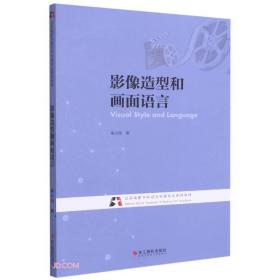
高等计算力学
正版现货,品相完整,套书只发一本,多版面书籍只对书名
¥ 51.53 九品
仅1件
北京昌平
认证卖家担保交易快速发货售后保障
作者朱哲明、王兴渝、任利、王蒙 著
出版社四川大学出版社
出版时间2019-03
版次1
装帧平装
上书时间2024-09-05
- 在售商品 暂无
- 平均发货时间 17小时
- 好评率 暂无
- 最新上架
商品详情
- 品相描述:九品
图书标准信息
- 作者 朱哲明、王兴渝、任利、王蒙 著
- 出版社 四川大学出版社
- 出版时间 2019-03
- 版次 1
- ISBN 9787569028300
- 定价 48.00元
- 装帧 平装
- 开本 16开
- 纸张 胶版纸
- 页数 193页
- 字数 416千字
- 正文语种 英语
- 丛书 四川大学精品立项教材
- 【内容简介】
- 《高等计算力学》着眼于固体结构或流体分析,介绍了有限元方法的基本原理及其在工程中的应用,指导学生使用Fortran、Matlab或C语言编译基本的有限元代码进行固体结构的应力和变形分析,对解决固体力学(如弹性力学、塑性力学、静力学、动力学等)、热传递(传导、对流、辐射)、流体力学、电磁学及流-固耦合等领域的问题具有指导作用。
- 【目录】
-
Chapter 1 Discretization and element stiffness
1.1 Discretization of a domain by elements
1.2 Solution to the ease that the three-node displacements are known
1.3 Solutions to the case that the three-node loads are known
Chapter 2 Subroutine to calculate element stiffness matrix
2.1 Calculating triangle area
2.2 Calculating [B] strain matrix
2.3 Calculating [S] stress matrix
2.4 Calculating element stiffness matrix [K]
Chapter 3 Equivalent nodal forces
3.1 Concentrated load
3.2 Body force
3.3 Distributed force
3.4 Subroutine for body load
Chapter 4 Global stiffness matrix
4.1 Global stiffness matrix and its property
4.2 Global matrix establishment
4.3 The properties of global matrix
4.4 Subroutine of global stiffness matrix
Chapter 5 Boundary conditions and solution of equilibrium equations
5.1 Multiplying a large number
5.2 Decreasing the number of the linear equations
5.3 Changing the diagonal term to one
5.4 Subroutine of adjusting global matrix
5.5 Solver
Chapter 6 Subroutine of nodal stresses and main program
6.1 The calculation method of nodal average stresses
6.2 Subroutine of nodal stress
6.3 Main program
Chapter 7 Area coordinates and more node element
7.1 Area coordinates
7.2 Selection method of general displacement function
7.3 Six-node triangular element
7.4 Four-node rectangle element
Chapter 8 Axisymmetric stress analysis
8.1 Strain matrix
8.2 Stress matrix
8.3 Elements stiffness matrix
8.4 Equivalent nodal force
Chapter 9 Three-dimensional stress analysis
9.1 Tetrahedron element method
9.2 Volume coordinates
9.3 Tetrahedral element with 10 nodes and 20 nodes
9.4 Brick element
Chapter 10 Isoparametric element
10.1 Definition of isoparametric element
10.2 Mapping method
10.3 Quadrilateral element
10.4 Relationship between □(数理化公式)
10.5 Relationship between □(数理化公式)
10.6 Discussion
10.7 Some distorted elements
Chapter 11 Numerical integration
11.1 Newton-Cotes integration method
11.2 Gauss integration method
11.3 Gauss integration application in a standard element
11.4 Equivalent nodal force
Chapter 12 Dynamic finite element method
12.1 Formulation of time dependent problem
12.2 Inertial force
12.3 Damping force
12.4 Global equilibrium equation
12.5 Step by step integration method
Chapter 13 Automatic Mesh Generation in MATLAB
13.1 Introduction
13.2 The algorithm for mesh generation
13.3 Implementation
13.4 Special Distance Functions
13.5 Examples
13.6 Mesh Generation in 3-D
Chapter 14 Model Generation in ANSYS
14.1 Understanding Model Generation
14.2 Planning Your Approach
14.3 Choosing a Model Type (2-D, 3-D, etc.)
14.4 Choosing Between Linear and Higher Order Elements
14.5 Solid Modeling and Direct Generation
14.6 Generating the Mesh
14.7 Defining Material Properties
14.8 Applying Loads and Obtaining the Solution
14.9 Reviewing the Results
14.10 Structural Introductory Tutorial
点击展开
点击收起
相关推荐
— 没有更多了 —



















以下为对购买帮助不大的评价